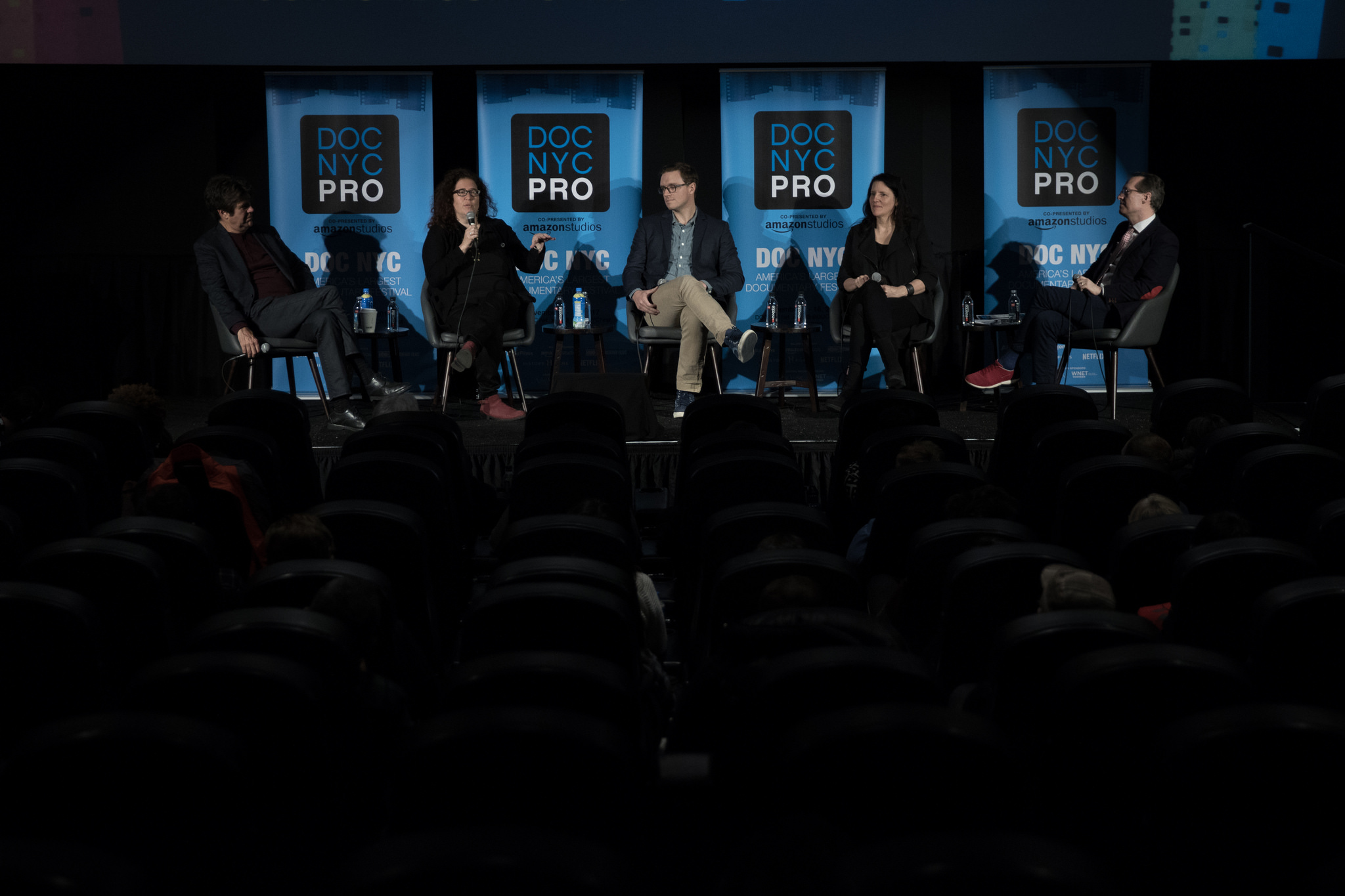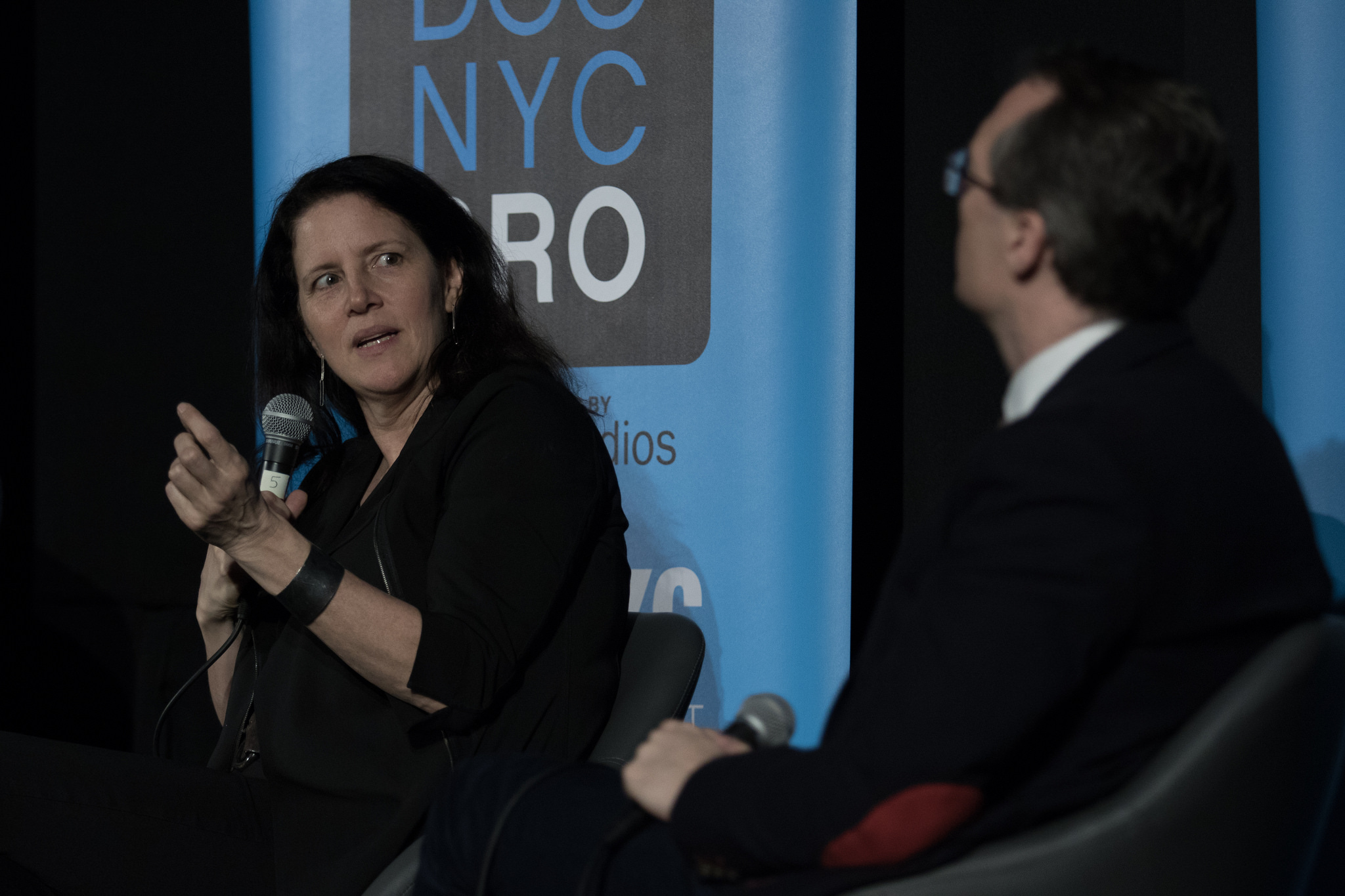On The Art of Observation at DOC NYC Pro Directors Greg Barker, Laura Poitras, editor Matthew Hamachek and producer Julie Goldman discuss the craft of observational filmmaking.


Written by Lisa Kovitz
Directors Greg Barker and Laura Poitras, editor Matthew Hamachek, and producer Julie Goldman took to the stage at DOC NYC Pro Day 2 with a focus on observational filmmaking.
The panel was moderated by Thom Powers, the Artistic Director of DOC NYC who framed the panel by noting that for decades many filmmakers were influenced by early directors like Albert Maysles and D.A. Pennebaker who invented special cameras that allowed them to follow real stories as observers. The panelists shared how they were able to gain access to high-level people and off-limit places as well as creating opportunities for innovations in their own storytelling.
Relationships Create the Opportunity of Access
Greg Barker, a seasoned documentarian, was able to leverage his personal relationship with former UN Ambassador Samantha Power, whose book Chasing the Flame: Sergio Vieira de Mello and the Fight to Save the World was the basis of Barker’s documentary Sergio. Power helped Barker enter three of the most secure places on earth: the State Department, the United Nations, and the White House as well as four members of the national security team and President Barack Obama to film The Final Year.
Julie Goldman, the producer of Abacus: Small Enough to Jail explained that director Steve James would show up early to the home or business of the Sung family, camera in hand trying to build trust, even with a myriad of ground rules. As the Sungs’ bank was the only one to be prosecuted in the 2008 financial crisis, the family was under tremendous stress. Over the course of filming, James James was able to develop relationships with members of the family who were initially reluctant to participate, but who eventually became stand-out characters in the story.
Julian Assange, the subject of Laura Poitras’ film Risk equally required a building of trust to gain the access she needed to begin filming in 2011. Assange, Poitras noted, is media savvy and was highly aware of the camera but over the course of filming him, learned to read his body language. She also dispelled the notion in observational filmmaking that the director and camera are a “fly on the wall,” because the camera doesn’t disappear.
Creative Ingenuity to Work Around Challenges
Barker avoided sit-down interviews with Obama in The Final Year, because he said the President would immediately go into “interview mode,” so Barker mostly spoke to the President backstage after speeches. Barker said he admired White House photographer Pete Souza’s knack for catching Obama in his most authentic moments.
Cameras were not allowed in court when the Abacus trial began, so Julie Goldman and Steve James hired a top courtroom artist named Christine Cornell to create the representation of testimony, then used transcripts from courtroom testimony (and the voice over talents of actress Margaret Colin of Veep), to recreate key moments in the trial.
In cases where it would have been too dangerous for director Matther Heineman to travel to Syria to film City of Ghosts, editor Matthew Hamachek used footage that the Syrian activists in exile had from the start of revolution, to provide the crucial context the film needed to explain the danger and the risks the film documents.

